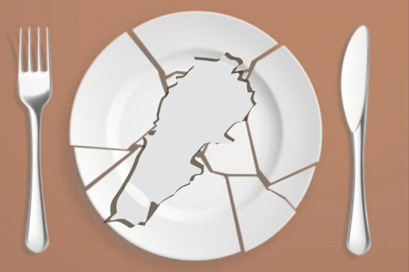Strategizing from 6 cities across the globe
Food Security in Lebanon: Post-War Emergency Response
As shocking as it may sound, 30 percent of the Lebanese population have faced food insecurity since the beginning of 2025, as per a study conducted by the World Food Program. With a population of 5.7 million people, nearly 1.7 million are at risk of malnutrition.
HEALTHCARESUSTAINABILITYPOLITICSDEMOCRACYINTERNATIONAL LAWENVIRONMENTFOOD SECURITY
Marina Daniel
4/15/20253 min read


As shocking as it may sound, 30 percent of the Lebanese population have faced food insecurity since the beginning of 2025, as per a study conducted by the World Food Program. With a population of 5.7 million people, nearly 1.7 million are at risk of malnutrition.
It is important to start with defining ‘Food Insecurity’ in order to grasp the Lebanese situation. Food insecurity is an official term used to describe the status where people cannot access food they need to live their fullest lives. The term was coined by the United States Department of Agriculture (USDA). The word “fullest” here implies having the privilege to access the full supply of food the body needs to thrive, not solely to survive. With that in mind, the next couple of sections explore the causes of food insecurity in Lebanon. Despite what the causes are, food insecurity is a result of a systemic issue rather than a personal failure.
Food insecurity can stem from various factors, including poverty due to unemployment, unaffordable housing, discrimination, or chronic health conditions. However, Lebanon’s specific case of insecurity is deeply rooted in the years of conflict with Israel and the recent bloody war that escalated from the South to the heart of Beirut.
Lebanon has had a long cycle of food shortages following the economic crisis and the collapse of the banking system in 2019. Nevertheless, a new pathway to the Food System was reimagined. The Ministry of Agriculture co-created a National Agricultural Strategy for 2020-2025 with the FAO to distribute soft wheat seeds and promote pulse crop cultivation.The Ministry of Public Health has also initiated an action plan that was in effect from 2021 and should have ended in 2026 to address maternal and child malnutrition. These efforts have been proven to be successful. The number of people in emergency was reported to be 195,000, and there were no people in catastrophe as reported by the Integrated Food Security Phase Classification (IPC) in 2022. This number further reduced to 74,000 people in emergency and 0 in catastrophe in 2023.
As of 2025, the IPC reported the highest number of refugees and internally displaced people who acutely suffered from food insecurity since the economic collapse. 205,000 people are in emergency following the sixty-six days of war that shattered lives and livelihoods. The agricultural infrastructure has suffered significant damage due to the hostilities, resulting in substantial disruption to farming activities. With the growing refugee population from Syria and Palestine residing in Lebanon, the IPC indicates that these communities are in a crisis of Phase 3 or worse.
It is projected that families will continue to face challenges with food security for at least the coming 3 months, in hope that recovery will soon be tangible. Yet, in order to completely overcome food insecurity, a multifaceted approach is required. As a primary step, Lebanon has to start with rebuilding and restoring agricultural infrastructure through clearing unexploded ordnance and providing soil recovery interventions. As a second milestone, it is highly recommended to improve direct farm to market systems in order to reduce price inflation. In other words, direct farm-to-market systems refer to models where farmers sell their products directly to consumers, retailers, or institutions without going through traditional intermediaries like wholesalers, distributors, or large-scale marketers. In this way, the supply chain is shortened, benefiting both producers and consumers. Third and most importantly, it is necessary to create a social safety net to strengthen school feeding programs and increase food assistance programs.
References:
IPC Report. (2025). Retrieved from: https://www.ipcinfo.org/fileadmin/user_upload/ipcinfo/docs/IPC_Lebanon_Acute_Food_Insecurity_Oct2024_Mar2025_Report.pdf
IPC Report. (2023). https://www.ipcinfo.org/fileadmin/user_upload/ipcinfo/docs/IPC_Lebanon_Acute_Food_Insecurity_Oct2023_Sept2024_Report.pdf
WFP (2025). Food Security deepens in Lebanon following conflict, new report shows. Retrieved from: https://www.wfp.org/news/food-insecurity-deepens-lebanon-following-conflict-new-report-shows#:~:text=22%20January%202025-,Food%20insecurity%20deepens%20in%20Lebanon%20following%20conflict%2C%20new%20report%20shows,2025%20begins%2C%20malnutrition%20risk%20remains.
